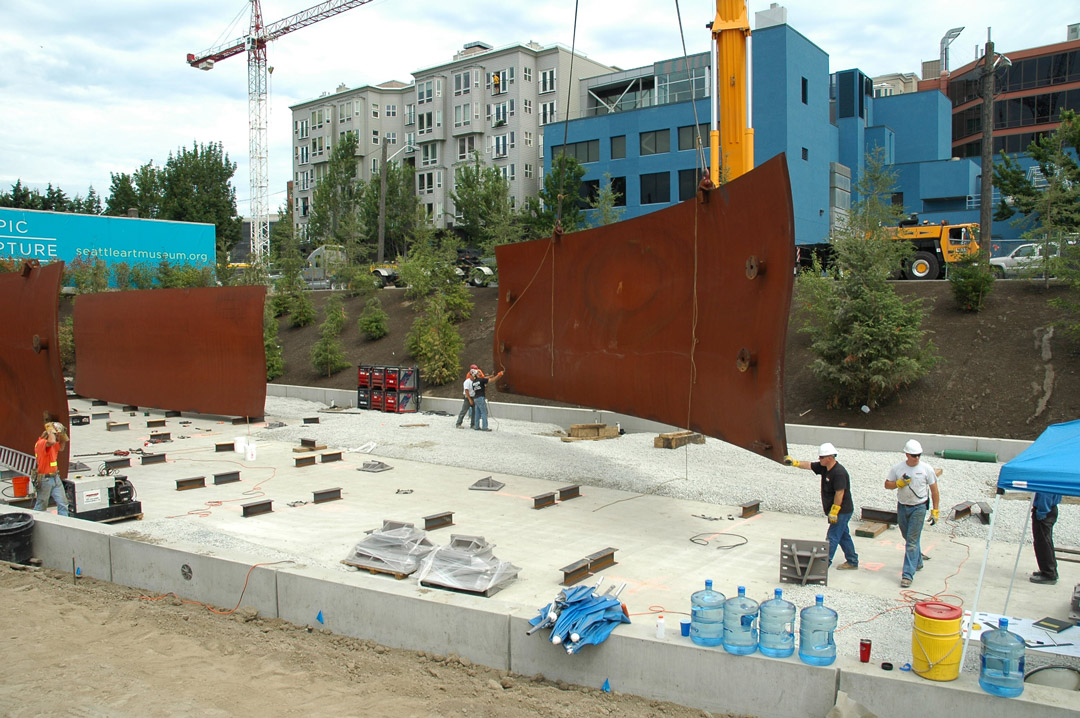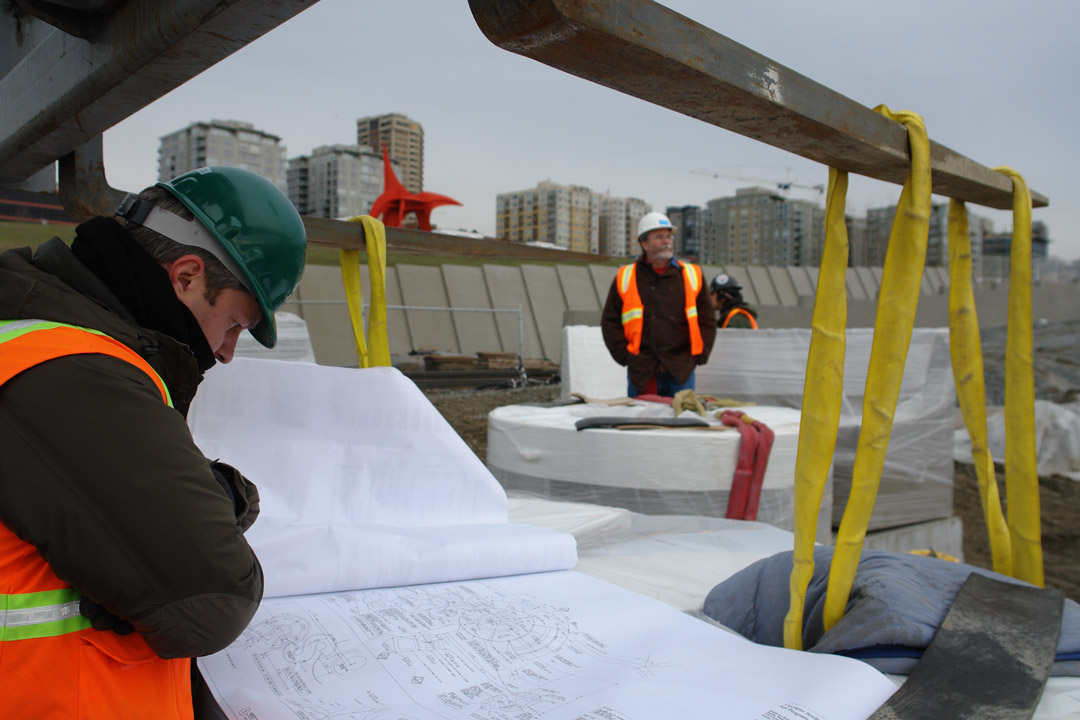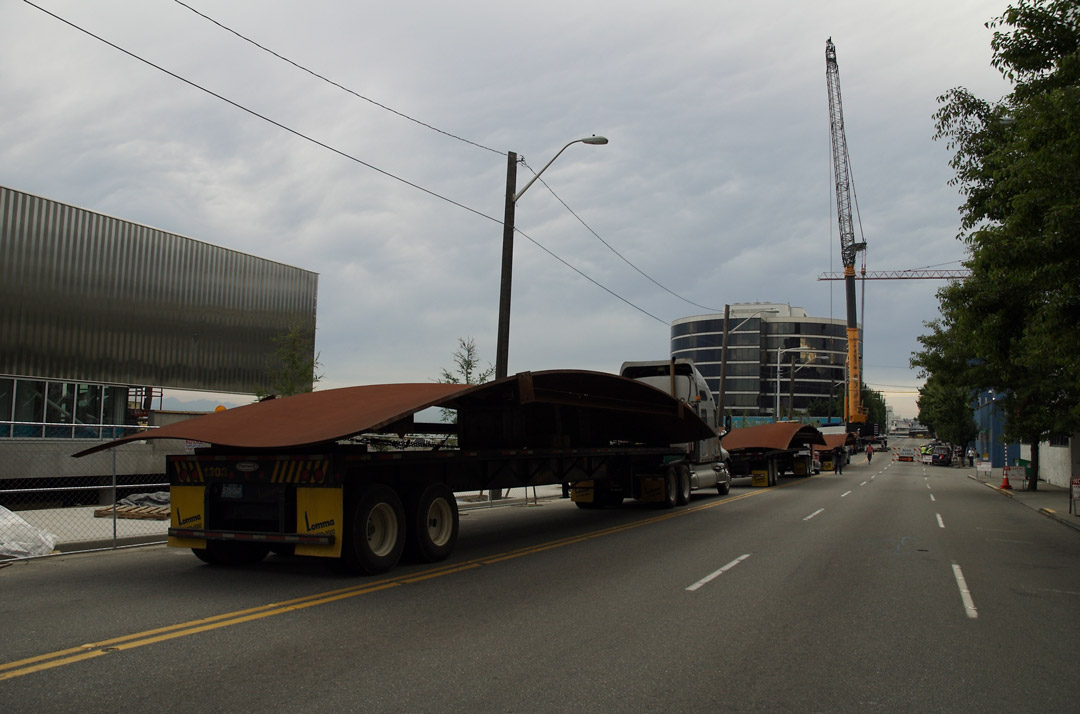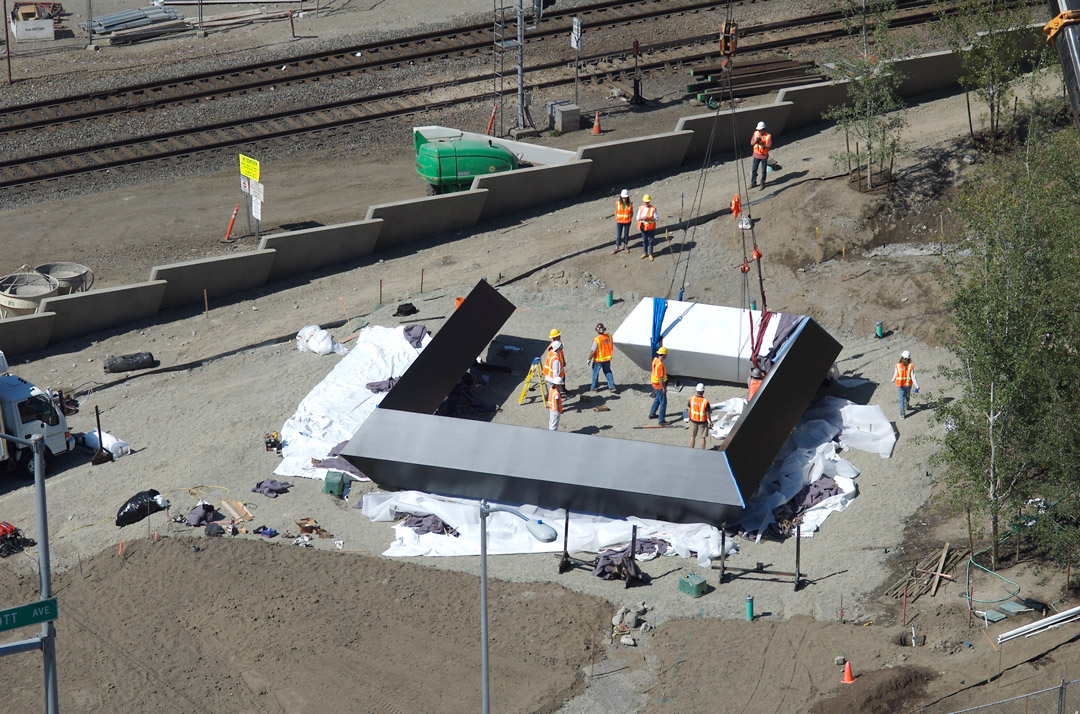The Park In Balance: Siting the Olympic Sculpture Park Collection

Walking through the nature and art of the Olympic Sculpture Park, from the low-lying valley around Richard Serra’s Wake to the span of open water that fills the sightlines of Jaume Plensa’s Echo, one experiences an impeccable balance of nature and whimsy. “I think the way all of the art in the park works together, in combination with the way everything is spaciously placed, is what makes the Olympic Sculpture Park truly unique. You have breathtaking views, while the art can really stand on its own and be appreciated,” said Catharina Manchanda, SAM’s Jon and Mary Shirley Curator of Modern and Contemporary Art.
But, the process of achieving this effect was far from simple. SAM’s former Director of Exhibit Design, Michael McCafferty, led the process of arranging the park’s permanent sculptures within Weiss/Manfredi’s architectural design while collaborating with artists, curators, museum staff, and other partners. McCafferty approached the placement of the art as if he were working with a “very complex gallery”—a larger, outdoor version of the exhibit spaces he designed at SAM’s downtown location and the Asian Art Museum. He worked with a to-scale model of the Park that included the varied topography of its landscape, as well as miniature, hand-painted versions of most of the 21 works that were on view when the Park opened.

McCafferty began by placing the largest pieces that would be on view, such as The Eagle by Alexander Calder, the Sculpture Park’s founding gift from trustees Jon and Mary Shirley, as well as Stinger by Tony Smith and Typewriter Eraser, Scale X by Claes Oldenburg and Coosje van Bruggen. “I would take the various models of the sculptures and move them around and around, considering the best viewing angles for someone who will walk all the way around the piece while they’re in the park and also for someone driving along Elliott Avenue,” McCafferty said. The medium and smaller sized works were then sited, through a design that balanced their weights and masses with the larger sculptures and the landscape, in a spirit he likened to a Japanese garden.


Over the past ten years, the park has grown and changed. The Aspen trees around Stinger stretch taller, the grass beneath The Eagle has thickened and new sculptures have entered the collection. One of the most recent is Jaume Plensa’s Echo, a large-scale piece depicting a tranquil visage that was donated by trustee Barney Ebsworth in 2013. Maintaining the approach established during the Park’s initial design, Echo’s placement, looking out onto the Puget Sound, was made by considering the pedestrians and cyclists who pass beneath it, as well as those who approach it from the water. The location of Echo also thrilled the artist, as Ebsworth described: “Jaume Plensa said how wonderful the placement overlooking the Olympic Mountains is because the sculpture’s subject is from Greek mythology. It’s perfect because Echo looks out towards Mount Olympus.” This siting of Echo between nature and art, between open space and calculated design, between land and sea—embodies the ethos that makes the Olympic Sculpture Park a uniquely Seattle place to experience art.
This post is the second in our series of stories exploring the history of the Olympic Sculpture Park in celebration of its 10th anniversary. Over the course of this year, we will continue reflecting on the Park’s evolution over the past decade.
—Erin Langner, Freelance Arts Writer and Former SAM Adult Public Programs Manager